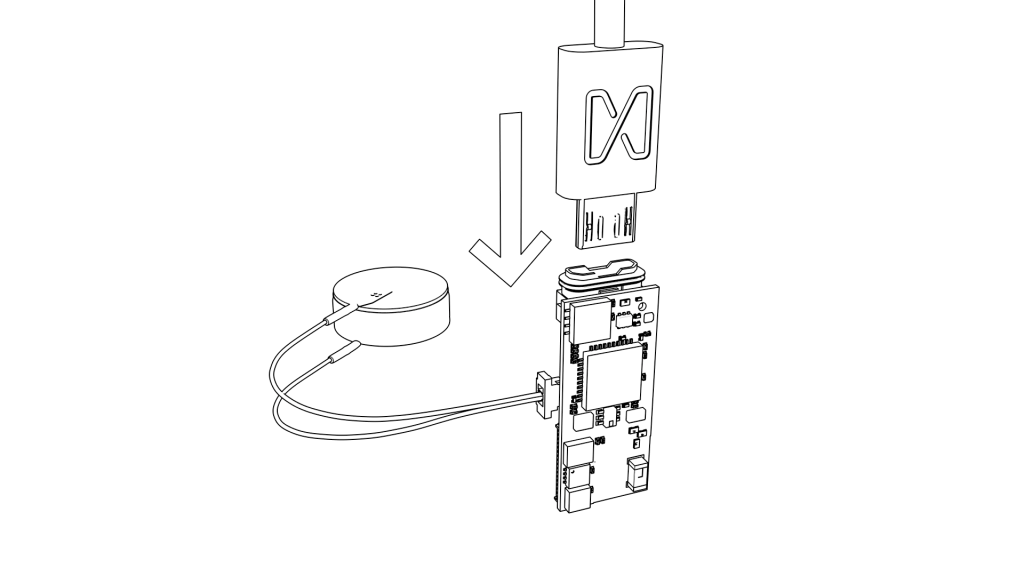Best Remote IoT Device Connect Free: The Ultimate Guide
In the rapidly evolving world of technology, connecting remote IoT devices for free has become a necessity for individuals and businesses alike. The Internet of Things (IoT) is revolutionizing how we interact with devices, making it essential to understand the tools and platforms available to connect these devices seamlessly. Whether you're a tech enthusiast, a small business owner, or an enterprise, this guide will provide you with the knowledge you need to connect remote IoT devices without breaking the bank.
As more devices become interconnected, the demand for cost-effective solutions has grown exponentially. From smart homes to industrial automation, IoT plays a crucial role in improving efficiency and reducing costs. In this article, we'll explore the best options for connecting remote IoT devices for free while ensuring security, reliability, and scalability.
This guide will delve into various platforms, tools, and strategies to help you get started with IoT connectivity. Whether you're a beginner or an experienced user, you'll find valuable insights and actionable tips to enhance your IoT experience. Let's dive in!
Read also:Exploring The Artistic Brilliance Of Partynextdoors Cover Album
Table of Contents
- Introduction to IoT
- Benefits of Remote IoT Connectivity
- Best Free IoT Platforms
- Choosing the Right Device
- Securing Your IoT Network
- Cost-Effective Solutions
- Common Challenges in IoT Connectivity
- Data Management in IoT
- Use Cases for Remote IoT Connectivity
- Future Trends in IoT Connectivity
- Conclusion
Introduction to IoT
The Internet of Things (IoT) refers to the network of physical devices embedded with sensors, software, and connectivity, enabling them to exchange data and perform actions without human intervention. IoT devices range from simple household gadgets like smart thermostats to complex industrial machinery used in manufacturing plants.
IoT technology has transformed various industries by improving efficiency, reducing costs, and enhancing user experiences. For instance, in agriculture, IoT sensors can monitor soil moisture levels and optimize irrigation systems, leading to better crop yields. Similarly, in healthcare, wearable devices can track vital signs and alert caregivers in case of emergencies.
As the number of connected devices continues to grow, finding cost-effective ways to connect remote IoT devices has become a priority for many users. This is where free IoT platforms and tools come into play, offering affordable solutions without compromising on functionality.
Benefits of Remote IoT Connectivity
Remote IoT connectivity offers numerous advantages that make it an attractive option for businesses and individuals. Some of the key benefits include:
- Cost Savings: By leveraging free platforms and tools, users can reduce the costs associated with IoT implementation.
- Scalability: Many free IoT platforms allow users to scale their operations as needed, accommodating growth without significant additional expenses.
- Real-Time Data Access: Remote connectivity enables users to access data from IoT devices in real-time, facilitating faster decision-making and improved efficiency.
- Improved Security: With the right tools and practices, remote IoT connectivity can be made secure, protecting sensitive data and ensuring privacy.
These benefits make remote IoT connectivity an essential component of modern technology solutions, offering unparalleled convenience and flexibility.
Best Free IoT Platforms
ThingsBoard
ThingsBoard is a popular open-source IoT platform that provides a comprehensive set of tools for connecting, managing, and visualizing IoT data. It supports various protocols, including MQTT, CoAP, and HTTP, making it compatible with a wide range of devices.
Read also:Justin Trudeaus New Girlfriend Everything You Need To Know
Key features of ThingsBoard include:
- Device management and monitoring
- Real-time data visualization
- Rule engine for automating actions
- Integration with third-party services
ThingsBoard is an excellent choice for users looking for a free, yet powerful IoT platform that can handle complex use cases.
Freedomotic
Freedomotic is another open-source IoT platform that focuses on simplicity and ease of use. It is designed to work with a variety of devices and protocols, making it a versatile option for connecting remote IoT devices.
Some of the notable features of Freedomotic include:
- Multi-protocol support
- User-friendly interface
- Community-driven development
- Extensive plugin library
Freedomotic is ideal for beginners and hobbyists who want to experiment with IoT without investing in expensive solutions.
Choosing the Right Device
Selecting the right IoT device is crucial for ensuring successful remote connectivity. Factors to consider when choosing a device include:
- Compatibility: Ensure the device is compatible with the chosen IoT platform and protocols.
- Power Consumption: Opt for devices with low power consumption to extend battery life and reduce operational costs.
- Connectivity Options: Choose devices that support multiple connectivity options, such as Wi-Fi, Bluetooth, and cellular networks.
- Security Features: Prioritize devices with robust security features to protect sensitive data and prevent unauthorized access.
By carefully evaluating these factors, users can select devices that meet their specific needs and requirements.
Securing Your IoT Network
Security is a critical concern when it comes to remote IoT connectivity. With the increasing number of connected devices, the risk of cyberattacks and data breaches also rises. To ensure the security of your IoT network, consider implementing the following best practices:
- Use strong passwords and two-factor authentication
- Regularly update firmware and software
- Encrypt data transmissions
- Limit device access to authorized users only
By following these security measures, users can protect their IoT networks from potential threats and safeguard sensitive information.
Cost-Effective Solutions
Implementing IoT solutions can be expensive, especially for small businesses and individuals. However, there are several cost-effective strategies that can help reduce expenses while maintaining functionality. Some of these strategies include:
- Utilizing free IoT platforms and tools
- Optimizing device usage and energy consumption
- Partnering with IoT service providers for shared resources
- Exploring open-source alternatives for software and hardware
By adopting these strategies, users can achieve their IoT goals without incurring significant costs.
Common Challenges in IoT Connectivity
Despite its many advantages, remote IoT connectivity comes with its own set of challenges. Some of the common challenges include:
- Interoperability Issues: Ensuring compatibility between different devices and platforms can be difficult.
- Bandwidth Limitations: High data volumes can strain network bandwidth, leading to performance issues.
- Data Privacy Concerns: Protecting user data from unauthorized access and misuse is a major concern.
- Device Management Complexity: Managing a large number of devices can be complex and time-consuming.
Addressing these challenges requires a combination of technical expertise, strategic planning, and the right tools.
Data Management in IoT
Effective data management is essential for maximizing the benefits of remote IoT connectivity. With the vast amount of data generated by IoT devices, it is crucial to implement efficient data storage, processing, and analysis solutions. Some best practices for IoT data management include:
- Using cloud-based storage solutions for scalability and accessibility
- Implementing data analytics tools for insights and decision-making
- Ensuring data privacy and compliance with regulations
- Regularly backing up data to prevent loss
By adopting these practices, users can harness the full potential of their IoT data and drive meaningful outcomes.
Use Cases for Remote IoT Connectivity
Remote IoT connectivity has a wide range of applications across various industries. Some of the most common use cases include:
- Smart Homes: Automating household appliances and systems for improved convenience and energy efficiency.
- Industrial Automation: Enhancing manufacturing processes through real-time monitoring and control.
- Healthcare: Enabling remote patient monitoring and telemedicine services.
- Agriculture: Optimizing crop management and resource utilization through precision farming techniques.
These use cases demonstrate the versatility and potential of remote IoT connectivity in transforming industries and improving lives.
Future Trends in IoT Connectivity
The field of IoT connectivity is constantly evolving, with new trends and technologies emerging regularly. Some of the key trends to watch out for in the near future include:
- 5G Networks: Offering faster speeds and lower latency for enhanced IoT performance.
- Edge Computing: Processing data closer to the source for reduced latency and improved efficiency.
- AI Integration: Leveraging artificial intelligence for advanced analytics and automation.
- Blockchain Technology: Ensuring secure and transparent data transactions in IoT networks.
These trends promise to further enhance the capabilities of IoT connectivity, paving the way for innovative solutions and applications.
Conclusion
Connecting remote IoT devices for free is not only possible but also highly beneficial for users across various domains. By leveraging free IoT platforms, selecting the right devices, and implementing best practices for security and data management, users can achieve their IoT goals without incurring significant costs.
We encourage you to explore the options discussed in this guide and experiment with different tools and platforms to find the best solution for your needs. Don't forget to share your experiences and insights in the comments section below, and feel free to explore other articles on our site for more information on IoT and related technologies.
Article Recommendations

